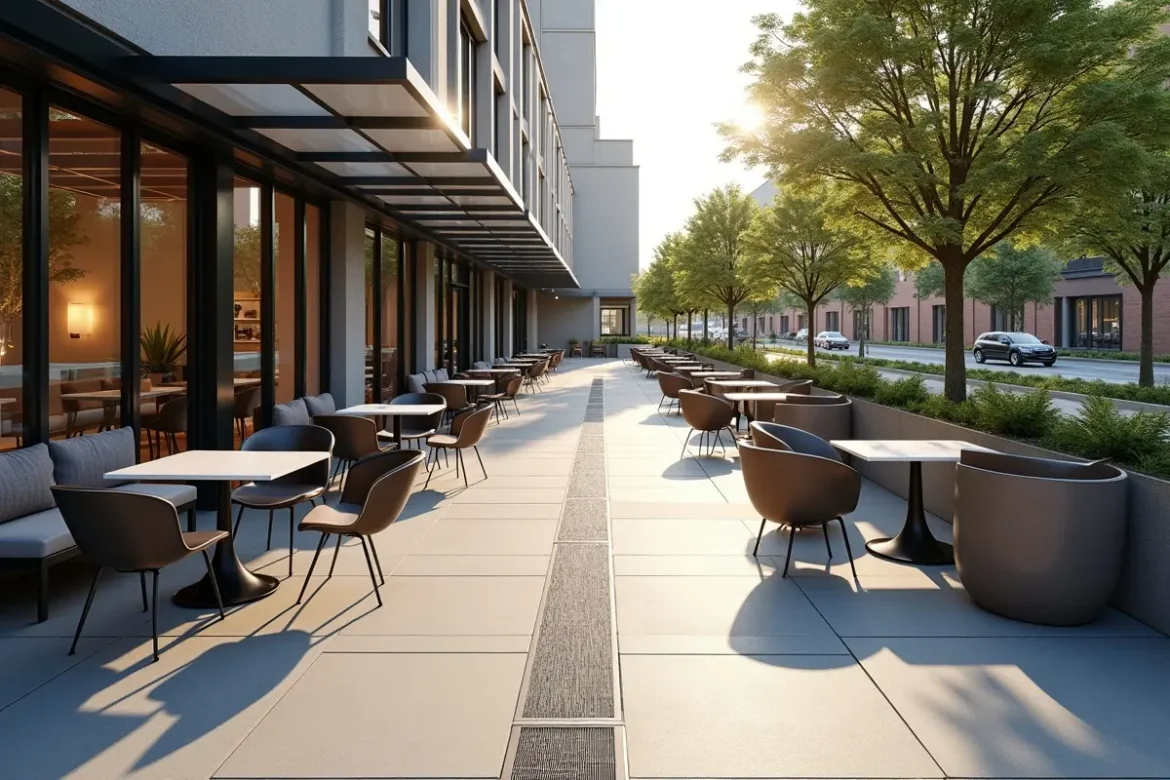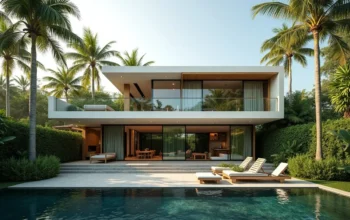
Looking to set up a smoking area outdoors?
If you’re wondering how to set up an outdoor smoking area the right way and make it look good, too, you’ve come to the right place.
We want your smoking area to look good, work well, and achieve its intended function.
But we also realize that creating a high-quality smoking area outdoors can be intimidating if you’re not sure where to start.
If you’re wondering where to set up an outdoor smoking area, how to make it functional, and how to make it look professional, we’ll break it down for you in this comprehensive guide.
What you’ll learn:
- Location Considerations
- Design Details
- Functional Features
- Professional Aesthetics
Contents
Location Considerations
Location is everything when it comes to setting up a smoking area outdoors.
Most people just pick a random corner of the yard and throw down an umbrella and a couple of chairs.
Smart placement, however, considers three factors:
- Distance from building entrances (most laws require 25 feet minimum)
- Natural airflow patterns
- Visual alignment with existing architecture
Your smoking area should be both accessible yet not intrusive. You need to think about the pedestrian traffic patterns and make sure it does not create bottlenecks or force non-smokers to walk through smoke.
Pro tip: Pick locations that naturally channel airflow away from the building entrance and windows.
Design Details
Want to know the difference between a professional smoking area and a hasty DIY job?
The details.
Here are a few smoking area design elements you need to think about:
- Weather protection
- Seating arrangement
- Waste management
Weather Protection
You want your smoking area to be usable all year long, which means you’ll have to factor in protection from rain and sun.
This includes:
- Overhead shelter
- Wind barriers (that do not trap smoke)
- Adequate drainage
Balance is important here, as you want people to be comfortable without creating a smoke trap.
Seating Arrangement
20% of non-smokers report secondhand smoke exposure at least once a week in workplaces that allow smoking.
Given the above, your seating arrangement is important.
Space out chairs to allow for natural air circulation.
Choose weather-resistant materials (powder-coated steel, treated teak) that will hold up to outdoor conditions without looking cheap.
Waste Management
Ask anyone what ruins a smoking area and they will tell you overflowing ashtrays.
Install several non-combustible ashtrays with wind-resistant designs.
Wall-mounted ashtrays save space and reduce maintenance headaches.
Functional Features
Aesthetics are important, but it’s the functional features that keep your smoking area actually usable.
With 80.3% of indoor workers having smoke-free workplace policies, outdoor functionality becomes even more critical.
Ventilation Strategy
Here’s something few people think about when it comes to outdoor smoking areas:
They still need ventilation planning.
Position your area to take advantage of prevailing winds and avoid enclosed corners that trap smoke.
If you are working with a partially enclosed space, look into installing outdoor-rated exhaust fans. This is an investment that pays for itself in user comfort and compliance.
Lighting Solutions
Your smoking area will need to be safe and usable during evening hours.
Use LED fixtures that provide adequate illumination without glare. Consider motion sensors to reduce energy waste while keeping the area properly lit when in use.
Bonus points if you pick lighting fixtures that tie into your overall design aesthetic, rather than looking like industrial afterthoughts.
Safety Considerations
Fire safety is your number one priority.
Install fire-resistant material around seating and waste disposal zones.
Have a fire extinguisher nearby and make sure all electrical components are outdoor-rated.
Professional Aesthetics
This is where most outdoor smoking areas completely fall flat.
The problem is most people just treat them like necessary evils rather than integrated design features.
Here are a few ways to help you make your smoking area look intentional and professional.
Material Selection
Pick materials that play well with your building’s existing architecture. If you have brick and steel, consider those elements in your smoking area design.
Avoid all-plastic furniture/fixtures that scream temporary and instead go for commercial-grade materials that look intentional.
Integration with Landscaping
Use plants/landscaping to help section off the smoking area from other outdoor spaces.
Position planters or a low hedge as a natural divider without feeling restrictive.
Note: Pick plants that can tolerate smoke and do not require constant care.
Cultural Considerations
Local smoking culture is also important to consider.
Some regions have a preference for social/lounge-style setups while others prefer more functional spaces for smoking.
Products like select smokes Canada can offer smokers quality alternatives that pair well with a well-designed outdoor smoking area.
Design Continuity
Your smoking area should be a natural extension of your property.
Use similar color palettes and materials and the same design language as your main building. This adds visual harmony and attention to detail.
Maintenance That Actually Works
Your smoking area design is great, but without a maintenance plan, it will fail.
Daily Maintenance
Empty ashtrays daily, sweep up, and check lights and safety equipment.
Consistent maintenance will keep the area clean and functional for longer.
Weekly Deep Cleaning
Power wash surfaces and seating and look for wear and damage. Replace consumables (ashtray sand/gravel, etc. ).
Seasonal Updates
Change out landscaping seasonally and check your weather protection before severe seasons (winter/spring, summer/fall).
Maintenance is always easier, and cheaper when you are proactive.
Maximizing Your Investment
Quality outdoor smoking areas require an initial investment, but you can maximize your return by smart planning.
Consider these cost-effective strategies:
- Choose durable, low-maintenance materials
- Install efficient lighting with motion sensors to cut down on energy costs
- Use landscaping that provides privacy and requires minimal maintenance
- Position elements to minimize weather damage (lengthen lifespan)
Budget-Friendly Alternatives
You don’t need a big budget to create a functional outdoor smoking area.
Start with basic weather protection with cantilever umbrellas or basic pergola structures. You can immediately improve functionality while you work on more permanent solutions.
Concrete pavers/gravel are also a budget-friendly flooring material over more expensive hardscaping.
Pro tip: Phase your improvements over time instead of trying to do everything at once.
ROI Considerations
A well-designed outdoor smoking area can actually add value to your property.
Commercial properties get increased tenant satisfaction and compliance with laws/regulations. Residential properties gain functional outdoor space that serves a dual-purpose beyond smoking.
Keep long-term maintenance costs and improved durability in mind when selecting materials.
The Bottom Line
Setting up a smoking area outdoors doesn’t have to be a tradeoff between functionality and aesthetics.
With the right planning and execution, you can create a space that not only serves its function but actually improves the property’s overall appearance.
The secret is to treat it as a legitimate design project rather than a regulatory afterthought.
Start with location, iterate on functionality, and finish with those design details to make it look good.
Remember: A quality outdoor smoking area shows professionalism and consideration for both smokers and non-smokers alike.



